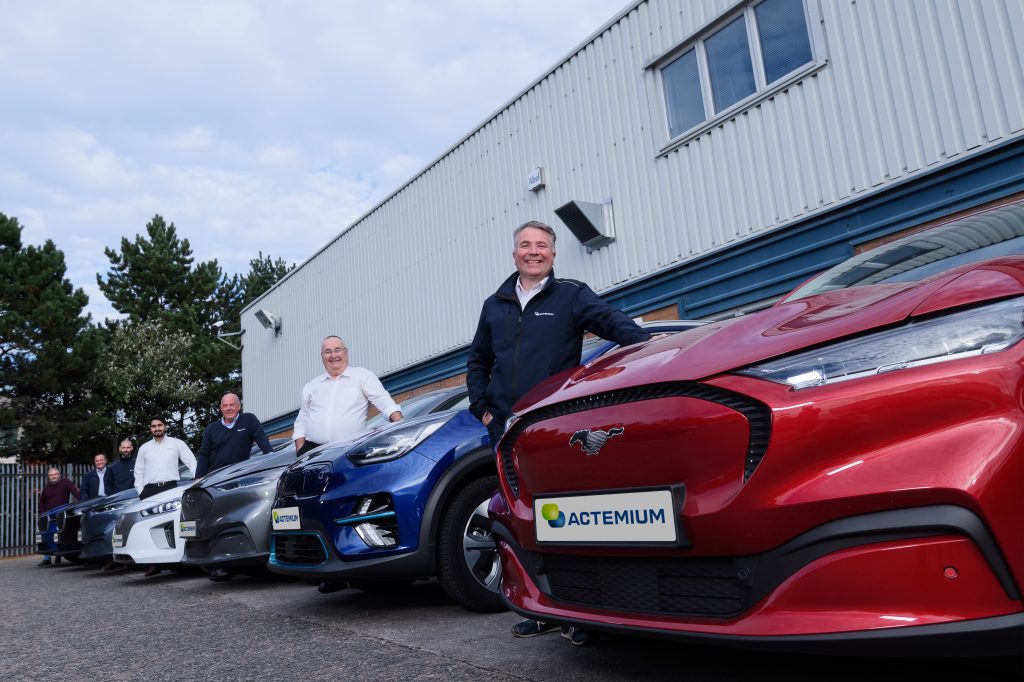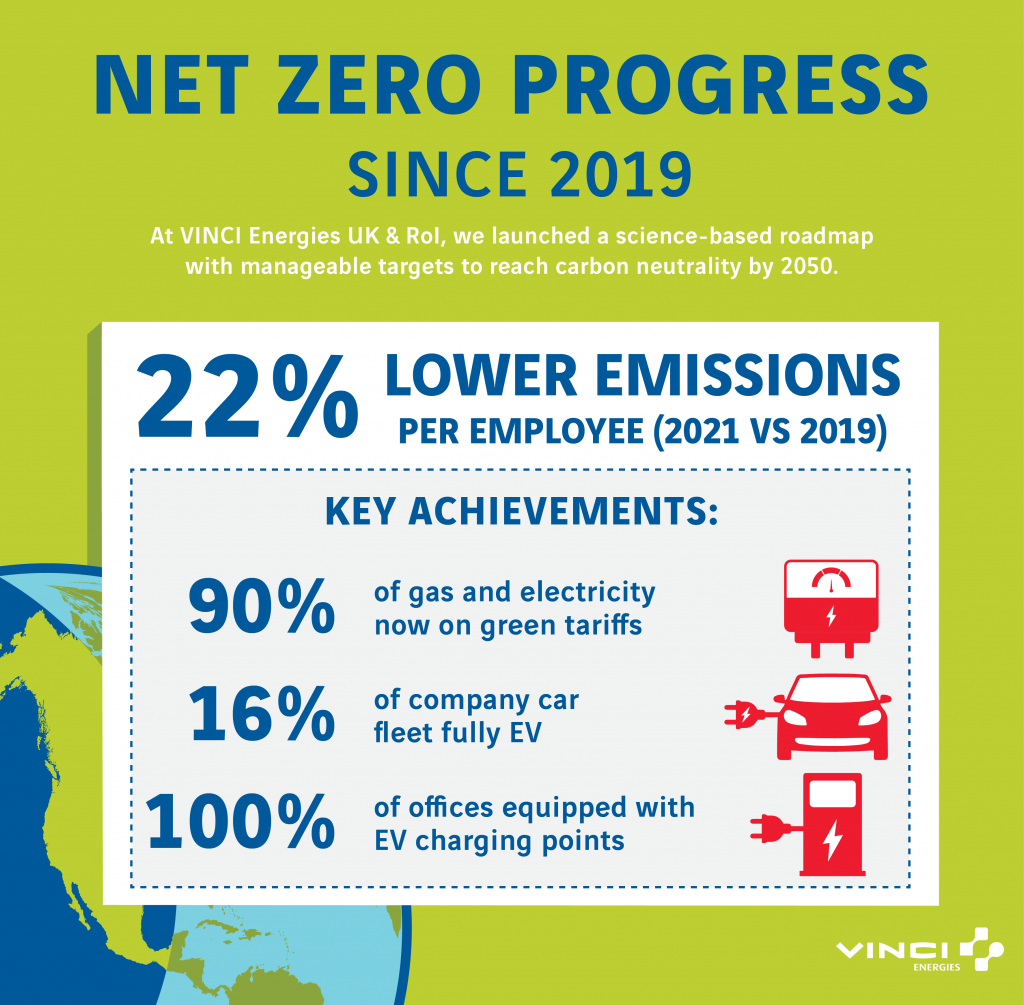VINCI Energies UK and RoI reduces CO2 footprint by 22% in two years with science-based plan
Since 2019 we have reduced our carbon footprint by 22% per employee, proving our efforts are paying off, says Jasmin Moroney, Head of SHEQ (Safety, Health, Environment & Quality) at VINCI Energies UK and RoI.
Two years ago, we announced our science-based plan to reach carbon neutrality by 2050 with an interim target to halve emissions per employee by 2030.
An in-depth analysis of our carbon footprint revealed that 76% stemmed from vehicle fuel, as we have many project engineers traveling regularly to serve clients, while 23% accounted for heating and powering our sites and offices.
Armed with this knowledge, we identified the main steps we could take to reduce our impact and calculated the contribution each one would make toward our overall targets. Providing we could cut emissions by 5% a year, we would remain on track.
Only a few months into our roadmap, the pandemic hit. Lockdowns temporarily closed our offices and our project engineers made only a fraction of the site visits they had previously.
This had an instant and significant effect on our emissions reporting. Our people were using far less vehicle fuel and we were not counting the energy employees were using working from home rather than in the office.
So, the massive 27% reduction in reported emissions per employee in 2020 felt like a hollow victory.
Real progress
As we returned to normal working practices in 2021, naturally our reported carbon footprint increased. However, we still achieved a 22% reduction per employee versus 2019.
This proves that the progress we have made is down to our commitment and our science-based plan, not COVID-19.
90% of our gas and electricity is now on a green tariff, which means our suppliers must feed the same amount of energy we use back into the grid from renewable sources. This has dramatically reduced our indirect carbon emissions and our recent acquisitions will also switch over to green tariffs as soon as practicable.
Growing uptake of EVs
At the same time, we have been transitioning our company car and commercial van fleets over to electric vehicles (EVs) to reduce our direct emissions from diesel fuel. Admittedly, we have not moved as fast as we would have liked to due EV supply issues, but we are heading in the right direction.
Our Actemium UK Industrial Perimeter, for example, began 2021 with just 7% of its company car fleet electric. Now just over half are EVs.

We have installed EV charging points at every Business Unit , and although it is not counted in our environmental reporting, some of our Business Units are also offering a salary sacrifice to encourage employees to choose EVs for their personal cars.
Maintaining momentum
We should be incredibly pleased with the quick wins we have made over the last two years to reduce our environmental impact. We are almost halfway towards our 10-year interim target! Our challenge now is to keep the momentum going within our Business Units and this will require us to change our way of working.
We are currently developing an overarching sustainability plan in line with the VINCI Group environment plan that encompasses not just emissions, but also circular economy and biodiversity. This plan will include targets and timelines and allocate responsibilities to support our Business Units to see it through.
We will also include an Environmental Indicator as part of our monthly reports. If we only have visibility of our carbon footprint on a yearly basis, it is difficult to fully understand the impact of our activities on emissions and take corrective action.
Including our carbon footprint in our monthly reports will help maintain focus and momentum and reinforce the message that sustainability is just as important as other monthly performance indicators.


